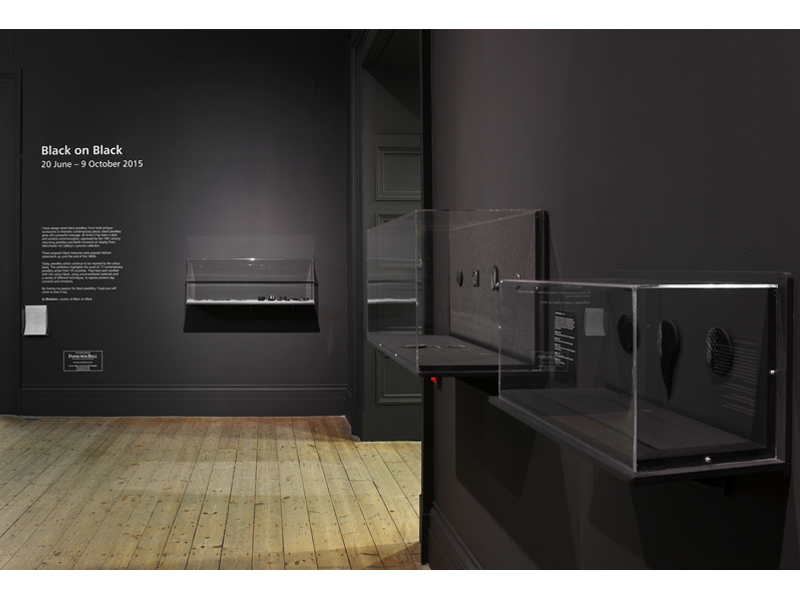
Black on Black
June 20, 2015–January 31, 2016
Manchester Art Gallery, Manchester, UK
Curated by Jo Bloxham
Black on Black is the latest jewelry exhibition curated by longtime Manchester Art Gallery collaborator Jo Bloxham. In her introduction, Bloxham explains that she loves black jewelry as it “gives off a powerful message.” To make her point, she has selected work from 17 contemporary jewelry artists, shown alongside several pieces from the historical collection, all united by their use of black.
Bloxham has previously taken over the first-floor space in the Manchester Art Gallery for The Sting of Passion, in which artists created jewelry in response to Pre-Raphaelite paintings from the Gallery’s collection. Before that, she had similarly sought to bring the tension between old and new into the public eye with Romancing the Stone, where late 19th-century statues located in Manchester’s town hall were adorned with contemporary work commissioned specifically for the project. In those two cases, the inspired juxtaposition of historical masterpieces with contemporary work brought renewed attention to both. (Less transformative but equally notable exhibitions by Bloxham at MAG include recent solo shows by Karl Fritsch and Bernhard Schobinger—the latter heavy on saw blades, scissors, and broken glass).

Bloxham’s latest pays tribute to the single color black in both form and content. Daylight was blocked out with huge shutters and the whole room itself has been painted the same opaque hue, illuminated by the glowing title written in Bloxham’s neon handwriting. That made for a powerful first impression and served to unify the varied selection visually. Meanwhile, the selection itself showed how the unique desirability of black jewelry is hammered out of the motives that justify its existence: mourning, patriotism, and a general form of abstinence from the easy tease of gold and jewels.
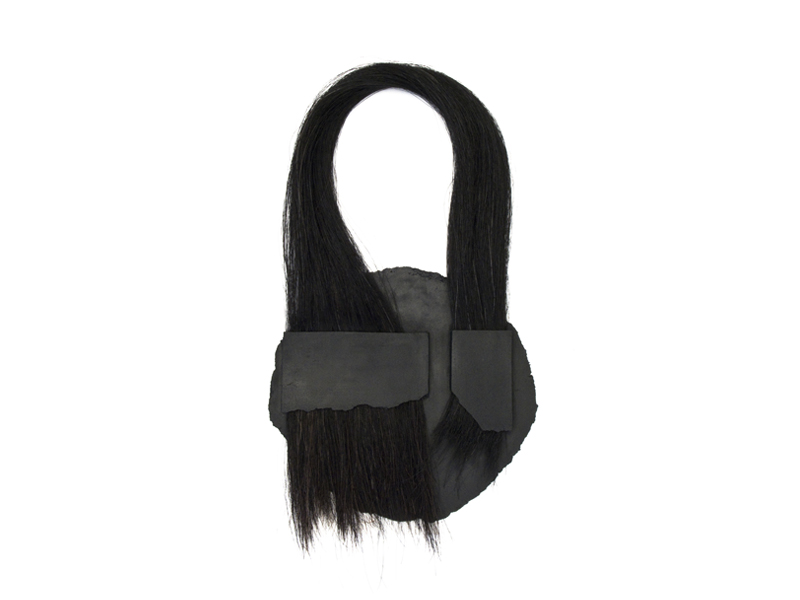
The dark emotions that govern the contemporary works are manifest from the get-go in Agnes Larsson’s oversize necklaces featuring alluring textures of ebony and glossy lengths of hair, and described as “an expression of thoughts around death that are often too difficult to put into words.” Riffing on similar themes, we find Julia Maria Künnap’s obsidian jewels—described as “painfully carved”—titled Mother and Daughter lll and Regret.
Most AJF readers will already know their work. More interesting for this readership, perhaps, is seeing it juxtaposed against costume jewelry and realizing that contemporary pieces align with mourning jewelry from the 1860s. The exhibition features a few jet pieces made during the reign of Queen Victoria, who gave jet jewelry status as a popular accessory by wearing it publicly in mourning her late husband Albert. (Jet—a fossilized wood—was plentiful in the northeastern town of Whitby, where Victorian jewelers got most of their supply.)
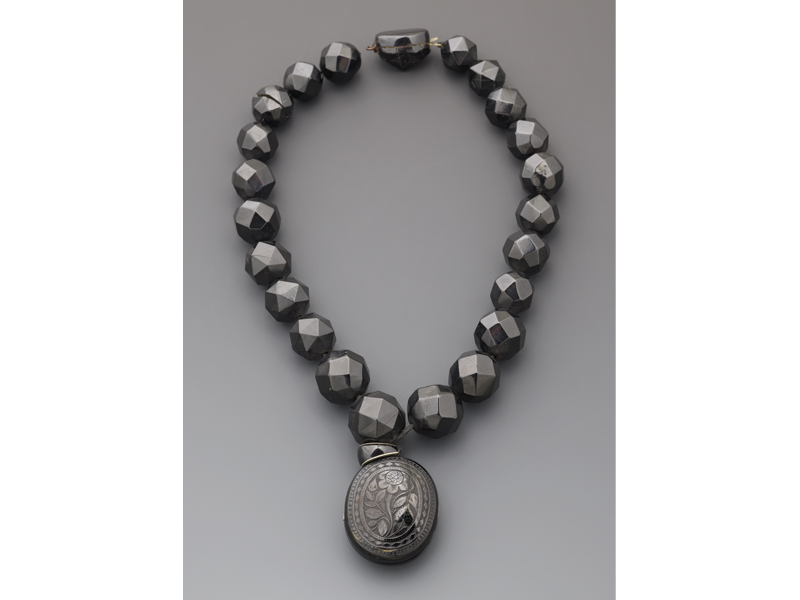
The exhibition tracks black jewelry’s journey into popularity back to the intricate specimens of Berlin iron. Initially used for mourning in the very early years of the 19th century, Berlin iron became a symbol of patriotic pride during 1813 and 1815, when the Prussian royal family gave civilians iron pieces in exchange for the precious gold and silver jewelry they donated to help fund the uprising against Napoleon during the War of Liberation. These black metal substitutes became fashionable, and were occasionally emblazoned with the phrases “Gold gab ich für Eisen” (I gave gold for iron), or “Für das Wohl des Vaterlands” (For the welfare of our country/fatherland).
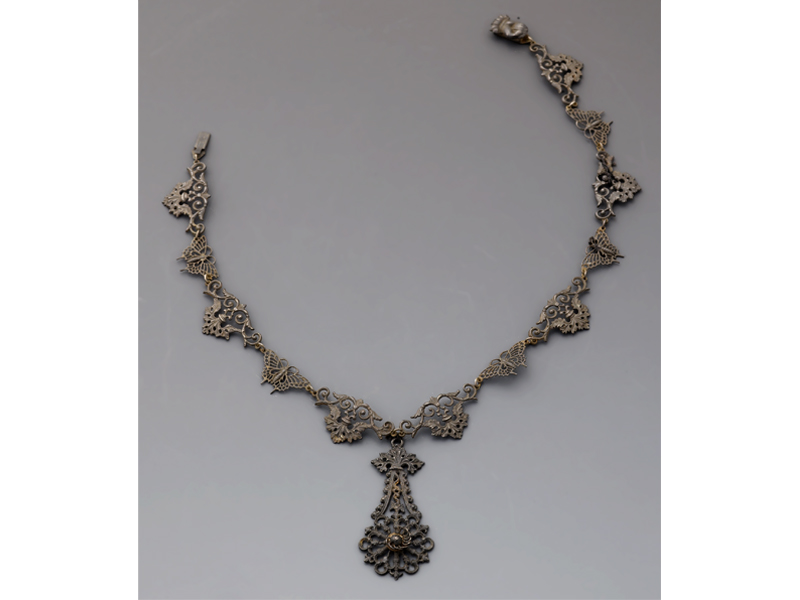
If the phrase “I traded gold for iron” can be applied to some of the contemporary jewelers’ creative trajectories, and to their choice of nonprecious materials over gold and silver, one senses that their decisions are altogether more provocative than consensual. Many of these artists make a show of relinquishing or destroying precious materials. Melanie Isverding pulverizes precious stones; Karen Bartlett covers silver with black flocking, sumptuous in its own right but concealing the material’s value; Jorge Manilla’s pieces—in matte black with dark red tints—are bound, burned, and crumpled as if survivors of an unknown torture. These strategies align with the critique of preciousness of other contemporary makers, in that they challenge the “gold standard” of traditional jewelry. But their “black aesthetic” does more than simply renounce the appeal of gold, or gems. This absence of color is a painterly form of abstinence, one of the several stratagems deployed in the work to channel our emotions toward the contemplative.

Likewise, the dimmed lighting in the gallery had a rather redemptive effect on the more melancholy work. It made it initially harder to see some of the work’s intricacies, but it created an environment that heightened the senses and urged visitors to peer closer at the works’ subtle details. Looking at the anonymous picture of an infant etched into one of Bettina Speckner’s works, for example, one felt in the presence of a treasured artifact, protected from the harsh daylight by the darkened room.
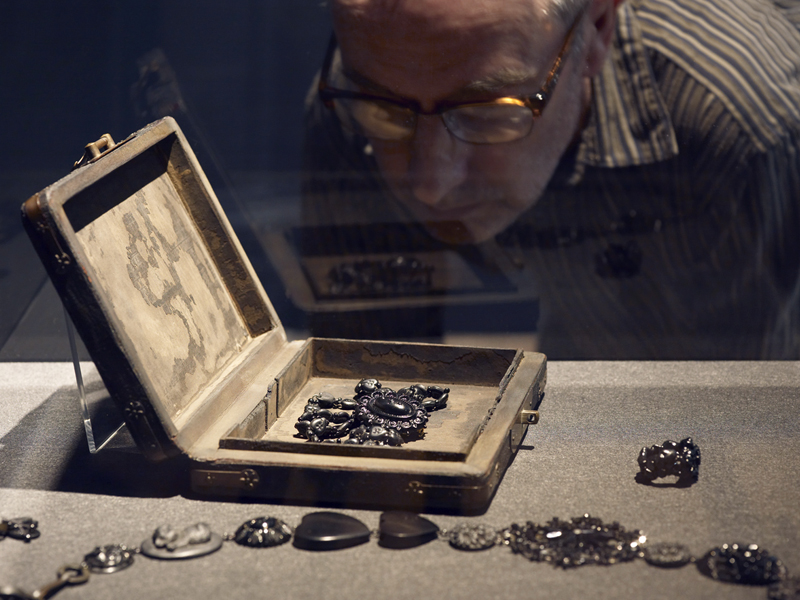
The artist Georgia O’Keeffe said, “There’s something about black. You feel hidden away in it.” I think the same can be said about this exhibition. Bold as it first appeared to visitors, Black on Black sucked them into a deep form of contemplation and encouraged very personal responses to a rich selection of jewelry. The exhibition worked on multiple levels, and although I could have happily read more on the work’s historical background, I did enjoy the interesting nuggets of history provided by the wall texts. These tidbits will hopefully prompt new jewelry amateurs to go out and explore the darker side of jewelry. Jewelry initiates, meanwhile, will have appreciated the strong historical selection and the opportunity to rediscover known work in a unique, transformative atmosphere.
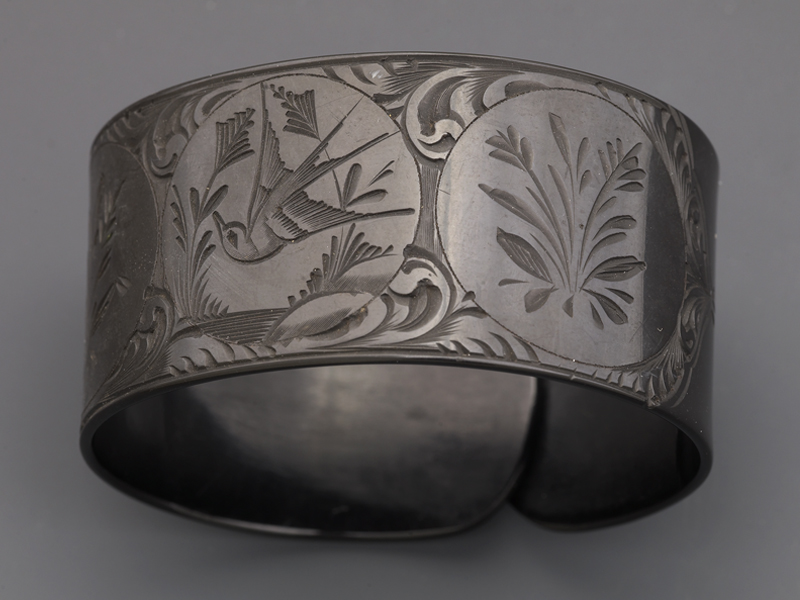
INDEX IMAGE: Brooch, 1880–1900, jet, 64 x 40 mm, gift of Miss Joan Sutcliffe (1958), photo: courtesy of Manchester Art Gallery 2015




